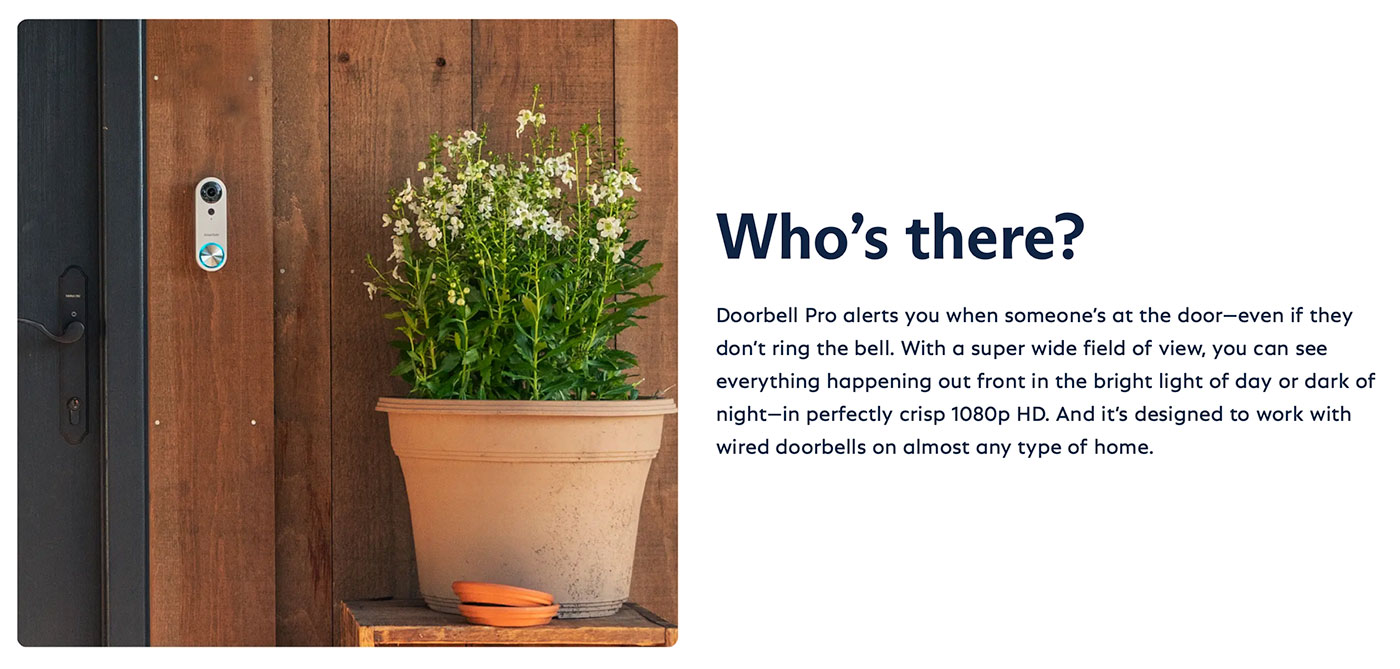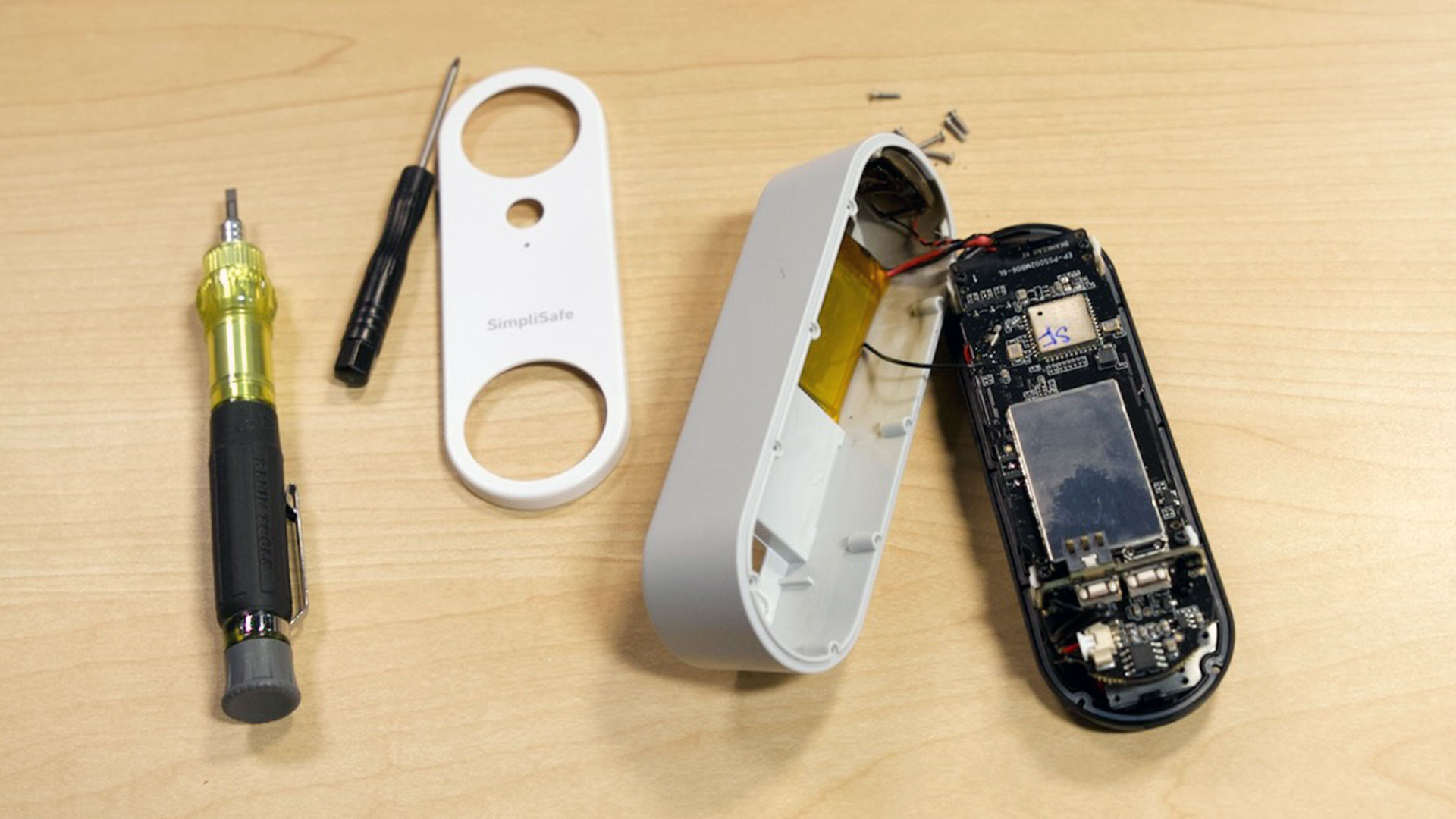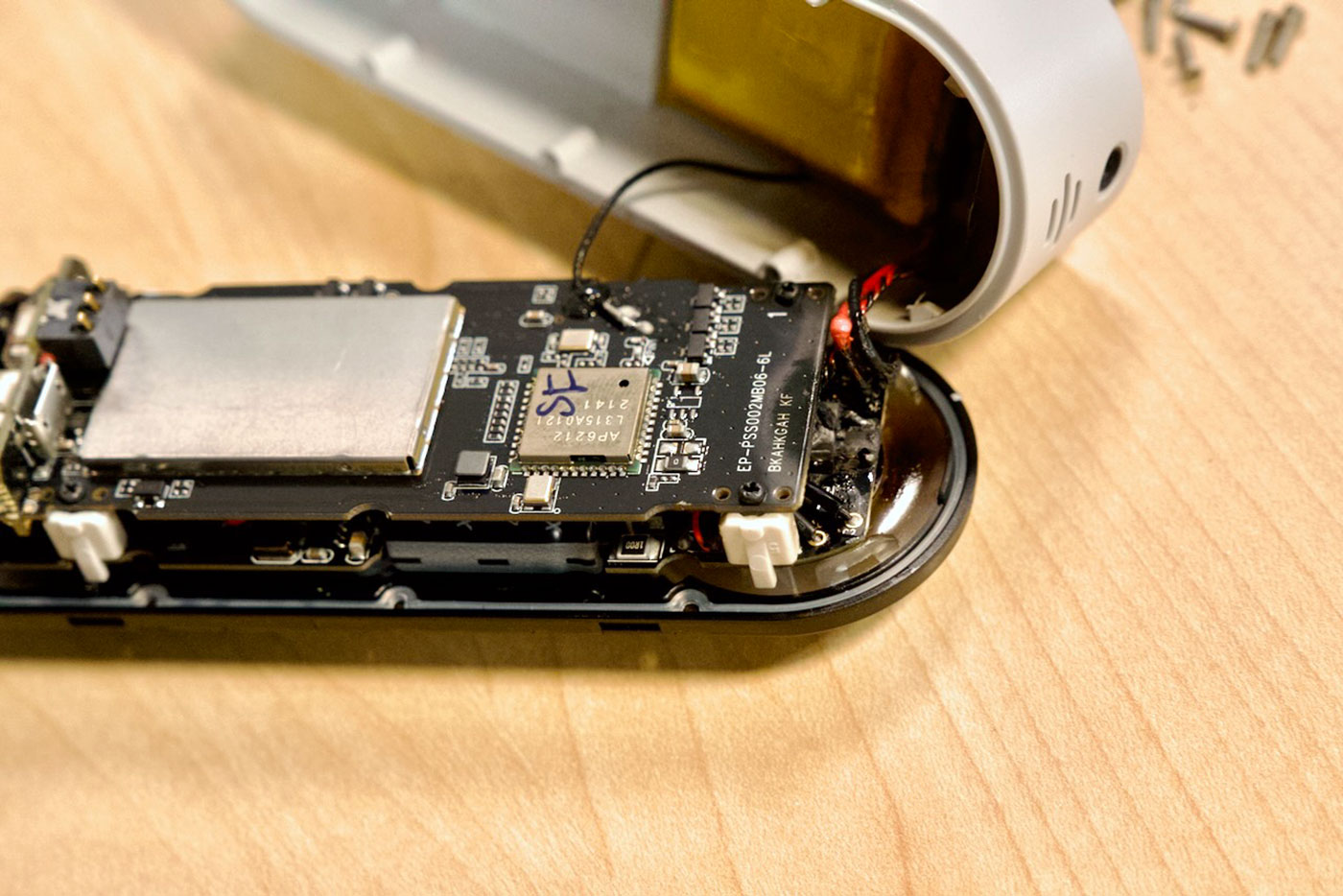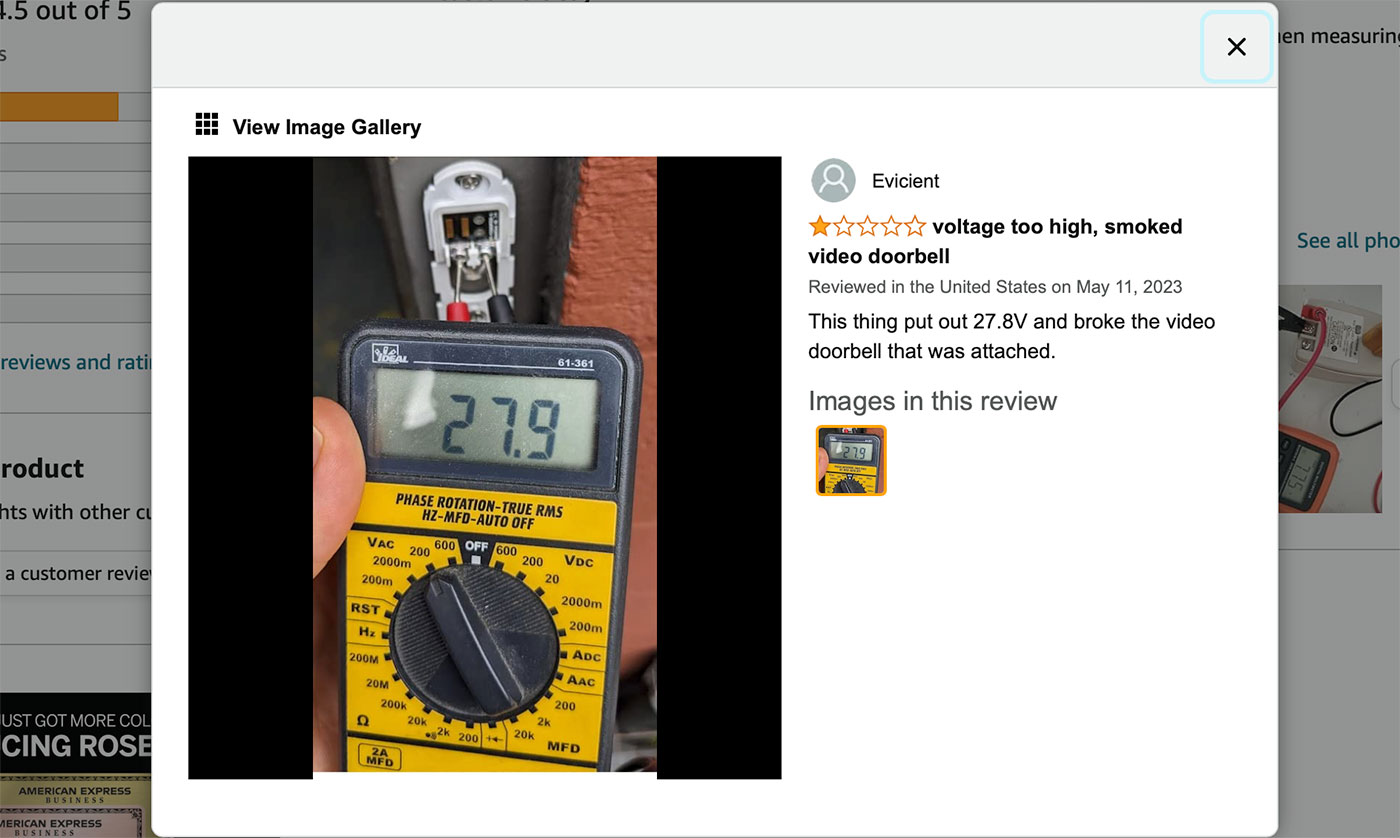...I'm just glad it was on the outside of the building, attached to non-flammable material :)
As part of my new studio/office buildout, I needed a 'smart' doorbell, so I could accept deliveries or see who rang, even if I was far from the door or recording.
I bought a SimpliSafe system for my location, and tied it into Home Assistant. It was easy to set up, the monthly cost was a fraction of what ADT wanted to charge, and yes, I know it's wireless-only communication can be tampered with. It's like a lock—it helps keep people honest, and is only one small part of a balanced security diet.

But I installed their Video Doorbell Pro a couple weeks ago, and setup was a breeze. Just get 24v doorbell wire to it, and bingo! You have a smart doorbell.
It worked great for about a week, then in the app it said the doorbell was 'Offline'. Actually, my kids were the first to notice—they visited and I heard knocking on the window... they said they tried ringing the doorbell but it wouldn't do anything!
Well, today I finally had the time to troubleshoot it, and I followed SimpliSafe's guide, but nothing got any response. The thing was dead as a doornail. Or, well, as a doorbell, I guess.
Probing the device further, I found I could pop off the front cover, and get at 8 screws around the perimeter. Removing those, I noticed the bottom would not pop out. I explored the back, and thought there may be a hidden 'warranty voiding' screw under the serial number sticker, but no... the bottom was just kinda glued to the case.
And after prying it carefully open, I found out why:

Looking more closely at the bottom wires—where it looks like the battery wires come off and go around a small PCB to a soldered connection—the plastic insulation was completely burnt off for a few mm, and they were obviously shorting to each other:

It looks like it could be a design flaw—it probably isn't a problem most of the time, but when you have the Li-Ion battery wires pass through a space where they could get pinched by a PCB during assembly... that could easily become the point of failure on many devices.
My best guess is my particular unit was assembled in a way where the battery wires were not carefully positioned as the PCB stack was inserted into the enclosure, and they got pinched between the outer plastic and the PCB.
It only took a week or so of running through hot/cold cycles (my doorbell is on a South-facing wall) before the little battery wires started to short out and burn up the plastic inside.
I contacted SimpliSafe, and a replacement unit is on the way (I may crack it open and take a peek at the wires before installing it!). I also have to give them a shout out for not having any proprietary screw heads or warranty-void-if-removed stickers impeding access to the device.
Update, Dec 9: SimpliSafe actually reached out today after noticing my Twitter post, and we talked in detail about the failure. They mentioned 24v is actually around the upper end of what the doorbell can handle. I re-measured the leads on the base coming from the AC transformer I bought, and it's 26V...
So then I went over to the Amazon page for the Jameco Reliapro MGT2450P transformer I bought, and dove into the reviews. Someone else ('Evicient') seems to have had the exact same problem I did:
I'm waiting to hear back from the SimpliSafe engineers tomorrow, but it sounds like the problem may be their doorbell is really not meant to exceed 24V—and this transformer supplied just a tad bit too much power.
That would also explain why it worked fine for a week or so... then eventually the wires melted as they're just not able to handle anything more than 24V. I've asked what transformer they might recommend as a replacement. I also suggested their setup guide maybe provide recommendations for new builds, as it currently assumes you're replacing an existing doorbell.
Kudos to them for being proactive about this—and maybe they'll introduce a Video Doorbell Pro 2 with a higher voltage tolerance ;)

Comments
I had a look at some other video doorbells that accept low voltage AC such as the wired versions of Nest and Ring. They all claim compatibility with doorbell transformers up to and including 24v, but their spec sheets indicate a maximum input of 24 VAC. Most 24 volt AC doorbell transformers are unregulated, and their output voltage changes both as a function of input line voltage fluctuations and also drops as the transformer is loaded. This means that a transformer with no load or only a little load can exceed 24v. This is even more likely if the transformer has a higher VA rating, as it is designed to output 24 VAC at a nominal load. I suspect that the video doorbell vendors are sticking to "up to 24v" to keep things simple for marketing, but that a lower nominal voltage would be a better choice. Ring mentions requiring transformers rated between 10VA and 40VA, and I suspect this tries to take into account a higher output on an underutilized transformer. If you have a location to hardwire the transformer, there are a bunch of 16VAC 30VA doorbell transformers available at home improvement stores from recognizable brands.
I've got a Unifi doorbell which states 16-24vac, however I'm just using their power supply with it and do chimes via home assistant. anyway -- their power supply does about 22V according to the camera...
Tied it into Home Assistant how? The unofficial API has an up to 20 seconds delay for the sensors. For automation purposes that's almost useless for anything.
The arming and disarming is by Websocket and quite fast, even in HA vs polling I guess with the sensors.
I requested change for the sensors recently but its fallen on deaf ears and been ignored.
So, for my system which I've had a year, its gradual zigbee sensors replacement for entry and motion.
The doorbells are old wifi tech anyhow IMHO and hit or miss for video upload to their cloud. I have two. Original transformer from 1980 and original Nutone mechanical chime which is all their compatible with.
Oh, I have Orbi mesh and two APs. Lots of wifi.
Eight seconds at best for outdoor cameras wake time. Mine are all solar, with 1.20 firmware, performance mode, solar can't charge and drain batteries fairly quickly. They rolled all back to 1.18 recently. They're slowly trying to recover battery charge.
No smart integration other than arming, totally closed system.
Which I'm gradually replacing with home assistant, Zigbee sensors and the Alarmo integration. No doorbells caught on fire...yet.
Strange! For my setup, I get about 2-3 seconds delay for anything—I'm using the v3 system with wired cameras (no batteries) and a wired doorbell (but communications over WiFi).
I wonder if there may be other delays present in your setup somehow? When I disarm my system, the ping to Home Assistant comes within about 2 seconds every time.
Im sure you don't have time to waste, but this perks up my curiosity. No notification but stumbled back on this comment with your reply. Based on reply, your using an SS3, same a me? As to using V3 (SS3) system wired cameras. You mean someone elses cameras, like Reokink POE? SS are all battery, except the old Simplicams were USB I think. And new indoor model is also battery USB charged.
I'm using the HA, Simplisafe unofficial integration. I can see all sensors, arm home and away in HA, I don't use voice or google or alexa for arming. The SS sensors polling time, which work in HA are depending on poll time, 1 to 20 seconds to see it happen in HA.
If you've cracked something useful for using Simplisafe faster in Home Assistant, it would be worth an article and interesting reading. 😆 Thanks for the reply. I don't want to repeat too much of my old post, I'm old and forgetful, lol, but Alarmo in HA, Zigbee entry etc. sensors, Ring V2 keypad, (zwave) for arming etc. SS eventually just for redundancy and upon failure, out the door.